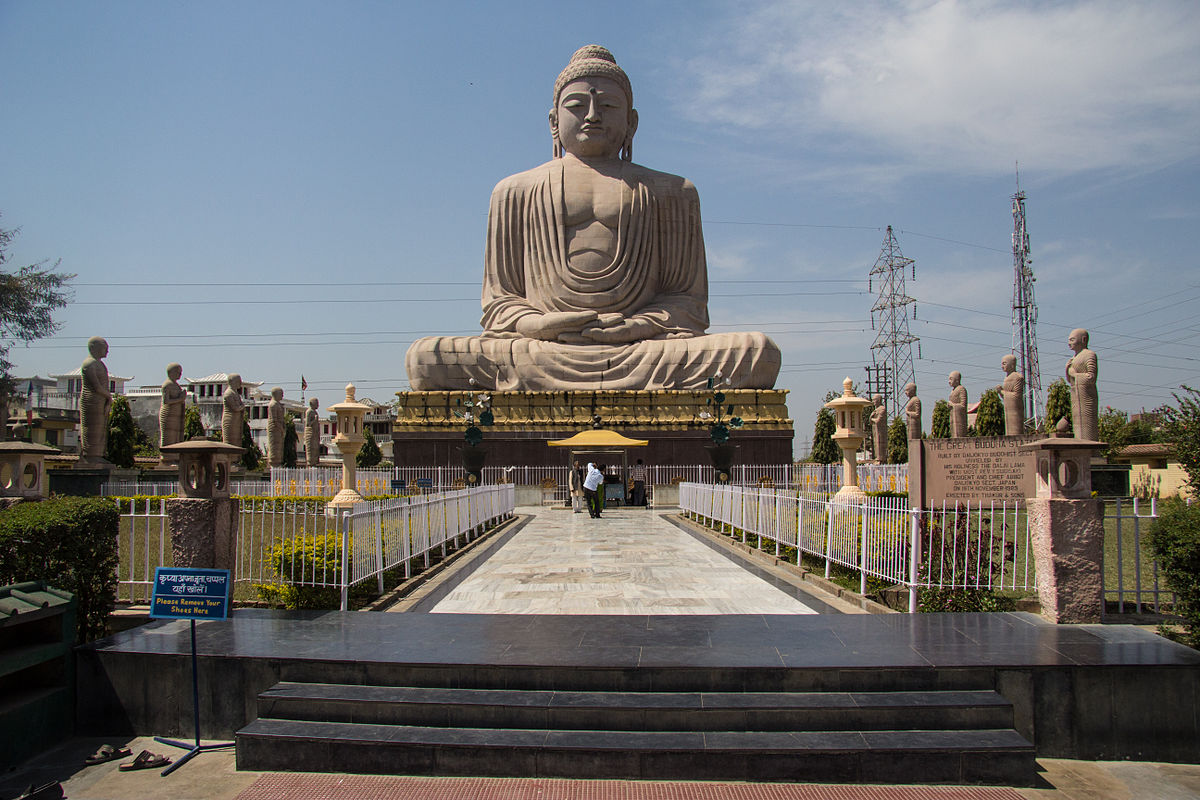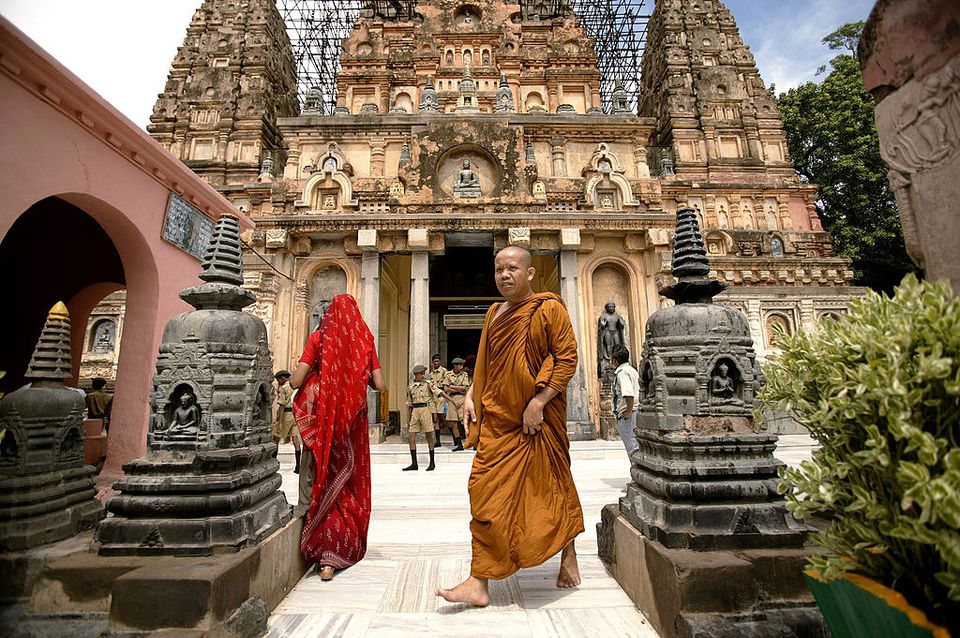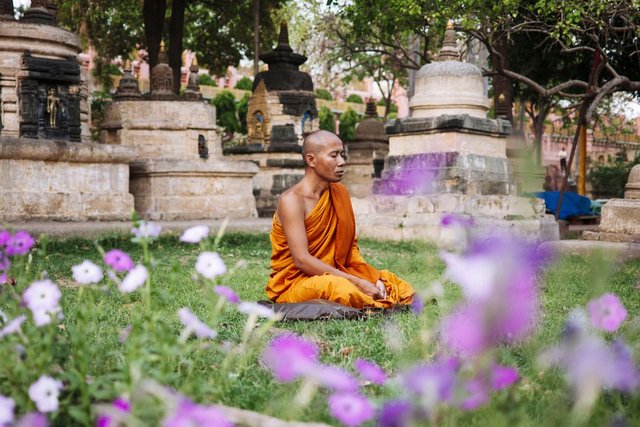Travel Tip: Bodhgaya, India

Bodhgaya is the most important Buddhist pilgrimage place in the world. Located in the state of Bihar, it’s here that Lord Buddha became enlightened during intense meditation under a Bodhi tree. The exact spot is now marked by the sprawling Mahabodhi Temple complex.

The town is also home to dozens of Buddhist monasteries. Those who are interested will find plenty of meditation and Buddhism courses and retreats on offer. You can visit Bodhgaya on the Mahaparinirvan Express Buddhist Train.

The Mahabodhi Temple in Bodh Gaya, one of India's top spiritual destinations, is not just a temple that marks the spot where the Buddha was enlightened. This elaborately crafted and immaculately maintained complex has a very soothing and serene ambiance, which people from all walks of life can soak up and appreciate.
After more than a three hour drive from Patna to Bodh Gaya, during which my driver honked the car's horn almost non-stop all the way, I was desperately in need of relaxation.
But would I be able to find the kind of peace I was looking for?
The closest town to Bodh Gaya, called Gaya, was a loud and seething jumble of people, animals, roads, and traffic of all kinds. Hence, I had fears that Bodh Gaya, only 12 kilometers away, might have a similar environment. Fortunately, my concerns were unfounded. I even had a profound mediation experience at the Mahabodhi Temple.

Mahabodhi Temple Complex Construction
The Mahabodhi Temple was declared a UNESCO World Heritage Site in 2002. Impressive as it is, the temple complex didn't always look this way. Prior to 1880, when it was restored by the British, all accounts indicate that it was a sadly uncared for and partially collapsed ruin.
It's believed that the temple was first built by Emperor Ashoka in the 3rd century. Its current form dates back to the 5th or 6th centuries. However, much of it was destroyed by Muslim rulers in the 11th century.
Even the existing bodhi (fig) tree at the temple complex is not the original tree that the Buddha became enlightened under. Apparently, it's likely to be the fifth succession of the original one. The other trees were destroyed, over time, by man-made and natural disasters.
Inside the Mahabodhi Temple Complex
As I made my way past the cacophony of enthusiastic vendors selling the usual devotional items, I got a glimpse of what waited for me inside the temple complex -- and my soul soared with delight.
I hadn't thought it would be so large, and there looked like so many places where I could lose myself in its sprawling grounds.
Indeed, apart from the main shrine that houses a gold painted statue of Buddha (made of black stone built by the Pala kings of Bengal), there are several different places of significance where the Buddha spent time subsequent to becoming enlightened. Signs indicate where each one is, and by walking around discovering them all, you'll be able to retrace the Buddha's activities.
Of course, the most important of the sacred places is the bodhi tree. Not to be confused with the many other large trees in the complex, it lies directly behind the main shrine, to the west. The shrine faces east, which is the direction Buddha was facing when he was meditating under the tree.
To the south, a pond adjoins the temple complex, and it's said to be where the Buddha may have bathed. Yet, it was the area surrounding the place of contemplation (known as the Jewel House or Ratanaghara) to the northeast, in the complex's inner courtyard, that I was most drawn to. The Buddha was believed to have spent the fourth week after enlightenment in mediation there. Nearby, Monks perform prostrations while others mediate on the wooden boards, especially placed on the grass between the cluster of votive stupas under a huge banyan tree.
Meditating at the Mahabodhi Temple Complex
As the sun was setting, with monks beside me, I finally sat down to meditate on one of the boards. As I've previously studied Vipassana meditation, it was an experience that I was very much looking forward to. The overhead tree branches were alive with bird chatter, while gentle chanting in the background and the waft of incense helped lull me into quiet contemplation. Away from the rest of the noisy tourists, many of whom didn't venture into the area, I found it so easy to leave worldly concerns behind. (Until mosquitoes started attacking me, that is!)
Recently, a new meditation garden was created in the southeast corner of the temple complex, to provide additional meditation space. It has two huge prayer bells, fountains, and plenty of room for groups.
Many people wonder about the vibrations of the Mahabodhi Temple complex. What are they really like? In my view, those who take the time to be silent and reflective will be able to feel that the energy is very soothing and uplifting. It's positively influenced by the great deal of spiritual activity, such as chanting and meditation, taking place on the temple grounds.
Opening Hours and Entrance Fees
The Mahabodhi Temple complex is open from 5 a.m. until 9 p.m. There's no entry fee. However, the charge for cameras is 100 rupees, and 300 rupees for video cameras. The meditation park is open from sunrise until sunset. A small entry fee is payable.
In order to maintain peace inside the temple premises, visitors must leave cell phones and electronic devices at the free baggage counter at the entrance.
